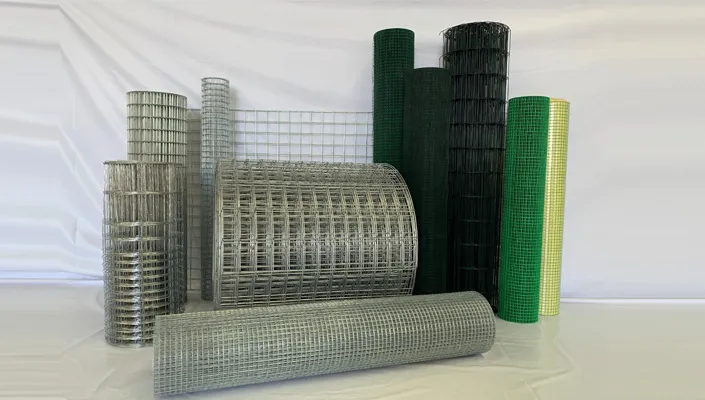Effective Solutions for Strong Cattle Wire Fencing Installation and Maintenance Techniques
The Benefits and Considerations of Cattle Wire Fencing
Cattle ranching is an essential component of agriculture that demands effective and reliable fencing solutions. Among the various fencing options available, cattle wire fencing stands out for its durability, strength, and adaptability. This article delves into the benefits of using cattle wire fencing, important considerations, and the best practices for installation and maintenance.
Understanding Cattle Wire Fencing
Cattle wire fencing typically consists of strong galvanized steel wires formed into vertical and horizontal lines. This type of fencing is designed to contain livestock efficiently while providing a clear boundary that can deter intruders and other animals from entering the property. Various designs exist, including barbed wire, high-tensile wire, and woven wire, each serving different needs depending on the specific circumstances of the rancher.
Benefits of Cattle Wire Fencing
1. Durability and Longevity One of the primary advantages of cattle wire fencing is its durability. When installed properly, it can endure harsh weather conditions and resist wear and tear from livestock. Galvanized steel is resistant to rust, ensuring the fence remains intact for years with minimal maintenance.
2. Cost-Effectiveness Although the initial investment in cattle wire fencing can be higher than that of other types of fencing materials, its long lifespan and low maintenance needs make it a cost-effective choice in the long run. Ranchers can save money on repairs and replacements, which can accumulate significantly over time with less resilient fencing options.
3. Security Cattle wire fencing provides a strong barrier that helps prevent cattle from escaping and keeps predators at bay. This added layer of protection is essential for maintaining the safety and security of livestock, thereby reducing the risk of injury or loss.
4. Versatility Cattle wire fencing is adaptable and can be utilized in various settings. Whether you are managing a small farm or a large ranch, it can be tailored to meet specific needs, including the height and spacing of the wires. Additionally, it can effectively contain different types of livestock, enhancing its utility across agricultural operations.
5. Minimal Visibility Disruption Unlike solid panel fences, cattle wire fencing allows visibility through the fence. This characteristic can be advantageous, allowing ranchers to monitor their cattle without obstruction while maintaining the aesthetic appeal of the landscape.
Considerations Before Installation
cattle wire fencing

While cattle wire fencing has numerous benefits, several factors should be considered before proceeding with installation
1. Terrain and Environment The type of soil and terrain on your property can influence the effectiveness of cattle wire fencing. Rocky or uneven ground may pose challenges during installation, while soft soils might necessitate deeper posts for stability.
2. Animal Behavior Understanding the behavior of cattle is crucial to determining the appropriate fencing design. For instance, more aggressive or curious cattle may require a different approach, such as fencing that includes barbed wire for additional deterrence.
3. Local Regulations Before installing cattle wire fencing, it's essential to check local regulations regarding fencing materials and heights. Compliance with these regulations is critical to avoid fines and legal disputes.
4. Maintenance While cattle wire fencing requires minimal upkeep, it is not entirely maintenance-free. Regular inspections for rust, tension adjustment, and ensuring posts are secure will extend the life of the fence.
Best Practices for Installation and Maintenance
1. Proper Installation Hiring a professional or seeking advice when installing cattle wire fencing can ensure it is set up correctly. Correct spacing between posts and tension in the wiring is crucial for maintaining structural integrity.
2. Regular Inspections Ranchers should establish a routine for inspecting their fencing. Look for any signs of wear and tear, rust, or loosening wires to address issues promptly and prevent larger problems.
3. Adaptation and Upgrades As the needs of your ranch change, consider adapting your cattle wire fencing. This may involve reinforcing weak sections, adding electric fencing for extra deterrence, or expanding the fenced area to accommodate growth.
In conclusion, cattle wire fencing offers an effective and reliable solution for ranchers needing to contain and protect their livestock. By understanding its advantages, considering critical factors, and following best practices, ranchers can make informed decisions that enhance the efficiency and safety of their operations. By investing in quality fencing, ranchers not only protect their livelihood but also contribute to the overall well-being of their livestock and the environment.
-
Space-Saving Chain Fence Hacks Vertical Gardening with Cyclone MeshNewsJul.16,2025
-
Innovations in Iron Nail Wire Production for Modern ConstructionNewsJul.16,2025
-
Creative Uses of Wire Netting Fence in Modern Landscape DesignNewsJul.16,2025
-
Barbed Wire Fence Innovations in Anti-Climb TechnologyNewsJul.16,2025
-
Architectural Uses of Umbrella Nails for Aesthetic Roof DesignsNewsJul.16,2025
-
Architectural Uses of Razor Barbed Wire in Secure Urban DesignNewsJul.16,2025




